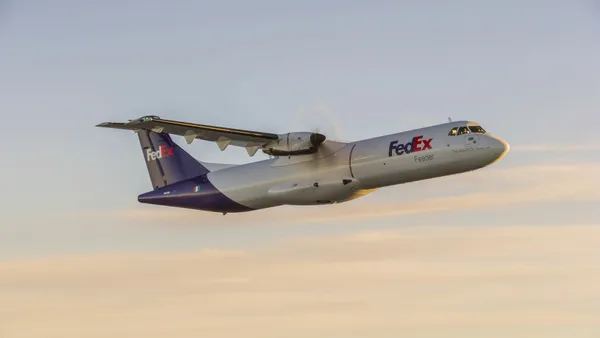Dive Brief:
- All eyes are on Q4 as shippers and forwarders look to jump on air cargo peak season planning as part of their resilience strategies, according to a May 2 report from Xeneta.
- The race to secure market share is driven by “what e-commerce is going to do out of southern China and Hong Kong later in the year,” after a magnitude of demand swept through the market in 2023, impacting typical peak activity, Chief Airfreight Officer Niall van de Wouw said.
- As an additional de-risking strategy, price validity periods for new capacity agreements are also increasing in length, with some agreements containing a “mechanism to deal with market rate changes throughout the validity of their contracts,” van de Wouw said.
Dive Insight:
The impact of Red Sea conflicts — although easing — pushed global air cargo demand up 11% year over year in April for the fourth consecutive month, Xeneta reported.
“We have clearly seen a push for airfreight capacity around the Indian subcontinent because of the Red Sea disruption, but this impact is easing as businesses which depend on ocean freight are now planning in longer lead times,” van de Wouw said. “So, we expect the recent surge in demand for airfreight in this region to lessen.”
Regardless, the combination of Middle East conflicts and ongoing e-commerce demand lifted the average spot rate to $2.59 per kilogram, which is its highest level this year. The report further noted that the YoY growth should be taken within the context of April 2023’s weak air cargo market.
“The growth in the spot rate was very much driven by regional developments as well as a case of market sentiment tending to follow market fundamentals,” van de Wouw said. “This is what happens in jumpy market conditions. The freight rate in April was a reaction to high first quarter volumes, but we expect rates to ease.”
According to van de Wouw, if carriers anticipate a busy Q4, they likely won’t sell their capacity now knowing they can possibly get 50% more revenue at that same capacity on the short-term market.
Meanwhile, extra cargo capacity spurred by the launch of carriers’ summer schedules boosted supply growth by 5% YoY in April.
The load factor dropped from 62% in March to 59% in April, pressured by the capacity increase from summer schedules alongside Q4 preparations, van de Wouw said.
“That’s top of mind for shippers, forwarders and, to a lesser extent, airlines, and they are jockeying for position after a ‘strong’ peak season last year,” he added. “Before then, there was no prior experience of the order of magnitude of the e-commerce behemoths and their impact on air cargo’s traditional peak season market. This year, the traditional market is looking to derisk and will plan to be better prepared.”














